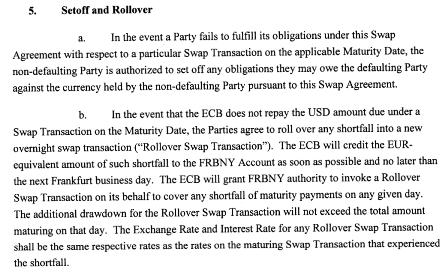Getting worse by the minute.
>
> (email exchange)
>
> On Thu, May 27, 2010 at 7:51 PM, wrote:
>
> Does anyone know of some way to talk to her?
> This is embarrassing.
>
Clinton spotlights US debt as diplomatic threat
Clinton says debt, deficit threaten U.S int’l position
U.S. committed to tough political steps on budget
Clinton urges new “national security” budget (Adds quotes, updates throughout)
By Andrew Quinn
May 27 (Reuters) — The United States’ huge national debt — now topping $13 trillion — is becoming a major threat to U.S. security and leadership in the world, Secretary of State Hillary Clinton said on Thursday.
“The United States must be strong at home in order to be strong abroad,” Clinton said in remarks on the Obama administration’s new national security doctrine, which was made public on Thursday.
“We cannot sustain this level of deficit financing and debt without losing our influence, without being constrained in the tough decisions we have to make,” Clinton said, adding that it was time to “make the national security case about reducing the deficit and getting the debt under control.”
The new Obama security strategy joins diplomatic engagement with economic discipline and military power to boost America’s standing, and pledges expanded partnerships with rising powers like India and China to share the global burden.
Clinton emphasized controlling the budget deficit, saying it was “personally painful” for her to see the yawning U.S. spending gap after her husband, former President Bill Clinton, ended his second term in 2001 with budget surpluses.
“That was not just an exercise in budgeteering. It was linked to a very clear understanding of what the United States needed to do to get positioned to lead for the foreseeable future, far into the 21st century,” she said.
Clinton said that as a Democratic U.S. senator from New York during the administration of former President George W. Bush, she had voted against “tax cuts that were never sustainable, wars that were never paid for” — but without success.
“Now we’re paying the piper,” she said.
Clinton in February blamed “outrageous” advice from Former Federal Reserve Chairman Alan Greenspan in part for the grim U.S. deficit picture.
POLITICALLY TOUGH
President Barack Obama, who pushed through his own huge stimulus spending plan last year amid the global financial crisis, was committed to taking the politically difficult steps needed to put government finances back in order, Clinton said.
“We are in a much stronger economic position than we were. And that matters. That matters when we go to China. That matters when we try to influence Russia. That matters when we talk to our allies in Europe,” Clinton said.
Obama has formed an 18-member bipartisan commission to study ways to reduce the U.S. deficit projected at about $1.5 trillion this year and bring long-term debt to manageable levels. It aims to find $229 billion in savings in 2015 to bring the deficit down to 3 percent of the overall economy from about 10 percent now.
The U.S. debt this week topped $13 trillion, according to USDebtClock.org, a website that tracks real-time growth in U.S. debt. That amounts to about 90 percent of annual gross domestic product, a level that could start impacting the economy.
Big budget deficits and rising U.S. debt are becoming major issues in the run-up to November’s congressional elections, and the European debt crisis that has unnerved financial markets has fueled these voter concerns.
While arguing for tighter overall economic discipline, Clinton said it was no time for the United States to roll back spending on international diplomatic and development programs, particularly as civilian agencies take up more of the work in Iraq and Afghanistan formerly done by the military.
“In order for us to meet the obligations that are now being asked of our civilian personnel, it costs money,” Clinton said, adding that it was time to look at an overall “national security budget” that would encompass funding for diplomatic, development and military operations.
“You cannot look at a defense budget, a State Department budget and a USAID (U.S. Agency for International Development) budget without defense overwhelming the combined efforts of the other two and without us falling back into the old stovepipes that I think are no longer relevant for the challenges of today,” Clinton said.


